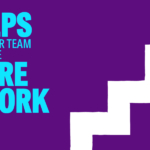How to build an effective L&D Strategy for the Modern Workforce
Create a compelling L&D offer and generate high performance in your organisation
Learning and Development (L&D) is a crucial attraction and retention lever, especially in a market where people have a plethora of options when it comes to choosing a role, an employer or a career. L&D has become part of employees’ pay and rewards package, with candidates considering the value of the training and career development an employer offers as part of their benefits. So how can companies give themselves an edge over competitors, attract and keep talent, fill key skill gaps and future-proof their business plans? By creating a diverse, blended L&D offering that caters for the needs of its modern workforce and the needs of the business at the same time.
Webinar Replay: How to create a kickass L&D Strategy
What is a blended L&D strategy?
Most workplaces are diverse, modern multigenerational ecosystems made up of several personality types, routines, schedules and learning preferences all thrown together. Add to this the new hybrid working model and it could seem that creating an L&D strategy that works for everyone is beyond the realm of possibility. Whilst it’s true that taking into account the wants and needs of the organisation as well as those of an incredibly varied modern workforce is hard, it is not impossible. Here are 10 ways to do it.
The steps to developing a modern L&D strategy
1. Determine your objective first
Putting together a bunch of training courses or offering subscriptions to online learning platforms and assuming the job is done is easy. But L&D is all about improving the performance of your people, as well as that of your business. Your offering should be centred around the main issue you are experiencing right now, and the one thing that would have the greatest impact on your company’s operations. “Think of the outputs and outcomes you want to see after people have gone through training, then build your L&D strategy around this,” says Jo Taylor, MD at Let’s Talk Talent (LTT). Are you trying to reduce your attrition rate? To improve staff motivation? To fill a particular skill gap? To adapt your business model to new industry trends? The answer to this question should be your starting point.
2. Stop writing long, overly complex L&D strategy documents
We’ve all spent weeks and months creating strategy documents that become obsolete as soon as the market shifts or there is a leadership shake-up. “The operative word here is agility,” according to Jo. “If your plan doesn’t fit on a single page, it’s just too long.” Make sure your strategy is regularly read, challenged, updated and reviewed. In short, a modern L&D strategy should be in constant use, and constant evolution.
3. View your strategy from your customer’s eyes
Today’s workforce has a huge amount of choice when it comes to professional development. The modern landscape is filled with free or cheap learning options, including podcasts, books, YouTube tutorials, online professional communities and networking groups. Learning doesn’t happen between the hours of 9 to 5 anymore, and you can no longer control how your people choose to learn or the content they elect to absorb. How do you get them to pick your material over everything else on offer?
“There’s only one thing for it,” says Jo. “You have to get to know them, and consider their preferences.” A blended offer that appeals to your people is all about striking the right balance between your skill needs as a business, and what your staff will be keen to learn about.
4. Include both Learning and Development in your strategy, but not in equal measures
There are several variables within the L&D equation. But it’s not an equal split. At LTT, we use the following ratio:
- 70% of L&D is made up of development (learning on the job, deepening current expertise)
- 10% of L&D is about learning (formal training, courses, gaining new skills)
- 20% of L&D is focused on networking
Most organisations direct the bulk of their efforts towards the formal training part of things, when in fact it only represents 10% of people’s training needs. But how can you support on the job training? Doesn’t it just happen on its own? Actually, no! There are ways to help employees sharpen their skills, such as setting up mentoring or coaching programmes, asking senior team members to shadow their junior colleagues or creating cross-functional projects.
To know more about the 70-20-10 learning and development model, read our article here.
5. Provide clear learning pathways
At LTT, we have a saying: “Resources, not courses.” The content you offer needs to add value for the user. It’s not just about throwing the kitchen sink at it: too much choice can be overwhelming and lead to choice paralysis. Your staff requires clear guidance on what their next steps should be in order to reach their career goals. Kind of like a Choose Your Own Adventure book, with several pathways available to choose from, but with the reader always firmly in charge of making the final decision. Learning paths give staff the opportunity to stay in control and determine what they want to learn, whilst some guardrails are in place to ensure your business objectives remain a key focus.
6. Offer an omnichannel L&D experience
Catering for the needs of a multigenerational office can be tricky. Considering the recent transition to a hybrid working model, it would be easy to assume that every course offered should be an online one. However, in-person training still has its place in a blended L&D strategy. The hybrid world has taught us that there is a way to accommodate everyone’s preferences, whether that’s coming in to be physically present or remaining behind a desktop or mobile screen. Pepper a little bit of everything in your learning library and track attendance, completion rates and participants’ feedback to start understanding what your modern workforce is all about.
7. Personalisation is key
Personalisation isn’t just the latest buzzword: the trend is here to stay. It’s no secret that the one-size-fits-all cookie cutter approach doesn’t work. Your organisation is made up of a diverse bunch of people, each with different learning styles and preferences. Make sure you provide your talent pool with the right resources for them to reach their own personalised goals and ambitions, in their own time.
Sounds tricky? There are tools to help you along the way. Most Learning Management Systems (LMS) offer functionality that facilitates the creation of personalised lists, and even recommandation modules that surface content based on interest or past learning habits. Personalised playlists can also be built on podcast or video platforms for highly customised learning pathways. Playlists also offer the advantage of surfacing important topics and building staff knowledge up from basic to advanced through collections or series of training videos or podcasts.
8. Use gamification principles
Who doesn’t secretly like badges, trophies and online competitions? Applying those to L&D can make learning much more fun and therefore easy to incorporate into a daily routine. Providing positive feedback and visually demonstrating progress can also be an added motivation generator. However, make sure gamification is carefully considered when it comes to your L&D offering. It’s not all about gimmicks: adding gamification elements to your learning should be focused on encouraging people to keep going on their learning journey, and not just become a distraction to the detriment of your actual content.
9. Consider microlearning as an L&D strategy
It’s true that modern workers are constantly interrupted by notifications, emails, online chats and endless pings. It’s no surprise they have a short attention span and struggle to dedicate long periods of time to learning and development. It’s not to say that they aren’t keen to learn new skills, but employees do need to optimise their time to fit learning into their daily routine at a time that fits their lifestyle. This could be, for example, listening to a podcast whilst running, watching tutorials on the commute home or reading blogs at home. Organisations should consider this new reality when building training material and ensure the content produced can easily be digested.
10. Don’t forget to measure your L&D efforts
In this digital age, it would seem that tracking is a given. But it’s not so much about the amount of data you compile; it’s about being intentional in determining the specific KPIs you need to track. Establish which data you should collect in order to get a true picture of whether or not you are making headway towards your initial goal. And if not, use those results to course correct and adapt your strategy along the way. Your KPIs could of course include access data, number of logins and course completion rates. You could also go as far as tracking comments and requesting feedback on each individual training module, to then surface the most popular topics and create new content that will truly hit the mark.
How to modernise your L&D strategy
Designing and implementing a learning and development strategy adapted to the modern workforce goes much further than just the initial strategy planning stage. It requires constantly maintaining your library, curating and building new content, adapting your material based on what works with your audience and most importantly, promoting your efforts.
Launch is only step one: putting together a learning experience that leaves your people wanting to come back is really where the battle begins. However, by following the 10 steps above, we’re confident you’ll be able to rise up to the challenge and give your modern workforce the tools they need to provide a valuable contribution towards your organisation’s objectives.
If you’d like more tips and advice on how to build the best possible L&D offering, don’t hesitate to download our whitepaper here.
Related Learning & Development Resources:




